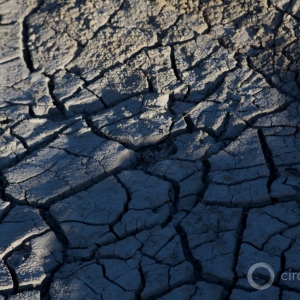Federal Water Tap, April 7: Population Growth and Climate Change Will Radically Alter California’s Largest Watershed
A major Bureau of Reclamation study depicts widespread changes in the coming decades for water supply and demand in California’s Sacramento and San Joaquin rivers, as well as for water quality in the delta ecosystem where the two rivers intersect.
The study, to be released publically later this month, uses climate models and population trends to assess physical changes in a watershed that drains 40 percent of California. The delta will grow saltier as seas rise and river flows drop. The watershed’s ability to deliver water to cities and farms will worsen by the end of the century. Gaps between supply and demand, already apparent, will grow larger, particularly in the southernmost reach of the San Joaquin, called the Tulare Lake Basin.
In almost all of the 18 possible climate futures that researchers modeled, the watershed is a radically changed ecosystem, said Arlan Nickel, who is managing the study for the Bureau of Reclamation.
“Precipitation is different, so are temperatures,” Nickel told Circle of Blue. “There is average warming of 4 degrees Fahrenheit by the end of the century. Precipitation is more variable. It becomes wetter in the north of the basin and drier the farther south you get.”
An increase in water demand will be driven by urban growth. The Central Valley, through which the two rivers flow, will add 8 million people by 2050 if current trends hold. Agricultural water use is expected to decline due to urban development.
The study – similar in scope to a landmark analysis of the Colorado River, published in December 2012 – is part of the Bureau of Reclamation’s basin study series. By the end of the year, Reclamation will publish a second report on the Sacramento-San Joaquin, assessing various options for closing the projected gaps between supply and demand.
“The study is important because we need to find the best strategies for adapting to climate change,” said Dave Eggerton, general manager of El Dorado County Water Agency, a study partner. “This is particularly important for communities that rely on Sierra Nevada snowpack.”
Waste Disposal Failure
The Interior Department’s internal watchdog harshly criticized the department’s management of nonhazardous waste disposal sites, which could put drinking water aquifers at risk.
The Office of the Inspector General assessed Class V underground injection control wells, which are pits that use gravity to push unwanted waste underground.
Inspectors found that two types of wells banned by the Environmental Protection Agency nearly a decade ago were still being operated by Interior – those being, cesspools for human waste and pits for disposing motor fuel and other vehicle waste.
Record Pollution Settlement
Anadarko Petroleum, a Texas-based oil company, agreed to a $US 5.1 billion settlement to clean up pollution created by one of its subsidiaries, the Justice Department announced.
The settlement includes $US 1 billion to clean up drinking water sources on the Navajo Nation that were contaminated by uranium mining by Kerr-McGee, a company Anadarko acquired in 2006, the Washington Post reports.
DC Water Week
Water industry groups will flock to the nation’s capital this week. In between awards ceremonies and trade expos, the groups representing drinking water, sewage, and stormwater utilities will lobby Congress for more infrastructure dollars.
Their message will be twofold, said Adam Krantz, who handles government policy for the National Association of Clean Water Agencies, a sewer group.
Krantz told Circle of Blue that the April 8 congressional briefing will emphasize the jobs and improvements in public health that come from infrastructure investment.
Lawmakers will also hear about the “utility of the future.” In this vision, utilities are vendors rather than garbage men. They will sell treated sewer water to manufacturers and landscapers. Excess phosphorous will sold to farmers. Methane derived from sludge will be burned for electricity.
Industry groups would like seed money and flexible regulatory policies to assist that transition. They sent identical letters to the chairs of the House and Senate budget committees requesting that potential cuts to two water infrastructure funds be reversed. President Obama’s 2015 budget proposal slashed spending for the funds by 25 percent.
EPA Water Rule
The EPA’s science advisory board will hold two public teleconferences to discuss a draft report released last fall. The report is the scientific foundation for an EPA proposal, released March 25, to clarify the regulatory reach of the Clean Water Act. The teleconferences are on April 28 and May 2. For dial-in information or to request a time slot for an oral statement, contact armitage.thomas@epa.gov.
Congress’s internal research arm published a 21-page analysis of the EPA’s proposed rule. Compared with current regulatory practices, the new rule would bring an additional 3 percent of U.S. water bodies under Clean Water Act jurisdiction.
Missouri River Runoff
The Army Corps of Engineers increased its runoff forecast for the Missouri River Basin, but claimed that its reservoirs will be able to regulate the melt water. A deep snowpack in the northern Rockies helped push the runoff forecast to 27 percent above normal.
Federal Water Tap is a weekly digest spotting trends in U.S. government water policy. To get more water news, follow Circle of Blue on Twitter and sign up for our newsletter.
Brett writes about agriculture, energy, infrastructure, and the politics and economics of water in the United States. He also writes the Federal Water Tap, Circle of Blue’s weekly digest of U.S. government water news. He is the winner of two Society of Environmental Journalists reporting awards, one of the top honors in American environmental journalism: first place for explanatory reporting for a series on septic system pollution in the United States(2016) and third place for beat reporting in a small market (2014). He received the Sierra Club’s Distinguished Service Award in 2018. Brett lives in Seattle, where he hikes the mountains and bakes pies. Contact Brett Walton






Leave a Reply
Want to join the discussion?Feel free to contribute!